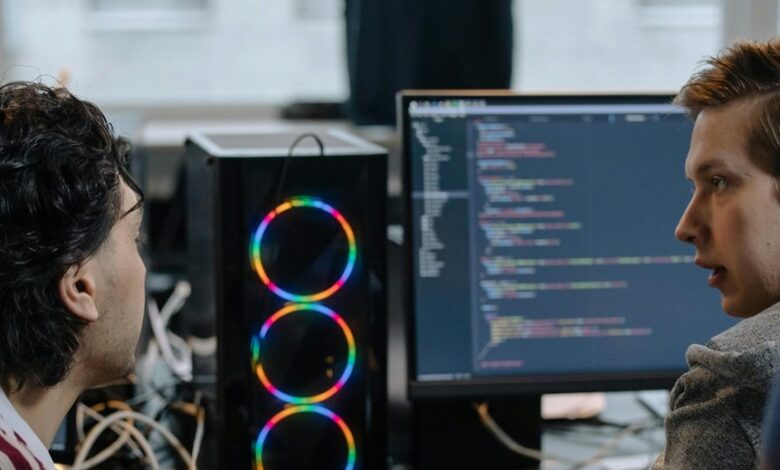
Designing effective leadership development programs necessitates a thorough examination of organizational needs and leadership competencies. This process starts with identifying current gaps and assessing existing capabilities. A strategic approach ensures that programs remain relevant and impactful. By integrating experiential learning and feedback mechanisms, organizations can create adaptable leaders. However, the challenge lies in maintaining alignment with ever-evolving strategic objectives, raising the question of how to foster a culture of continuous improvement.
Identifying Leadership Competencies
Identifying leadership competencies is a critical step in the design of effective leadership development programs.
Understanding various leadership styles and integrating emotional intelligence are essential for fostering adaptable leaders.
Assessing Current Leadership Needs
Assessing current leadership needs is crucial for organizations aiming to align their leadership capabilities with strategic objectives.
This process involves identifying skill gaps, evaluating existing leadership competencies, and analyzing how these elements support organizational goals.
Identifying Skill Gaps
A thorough analysis of leadership capabilities can reveal critical skill gaps that hinder organizational effectiveness. Conducting a skill assessment through gap analysis enables organizations to pinpoint deficiencies and prioritize development efforts. The following table illustrates common leadership skills and potential gaps:
| Leadership Skill | Potential Gap |
|---|---|
| Communication | Ineffective messaging |
| Decision-making | Slow response times |
| Strategic thinking | Lack of vision |
| Emotional intelligence | Low team morale |
| Conflict resolution | High turnover rates |
Evaluating Leadership Competencies
How can organizations ensure their leadership aligns with current and future challenges?
By implementing competency frameworks that define essential leadership skills and utilizing robust feedback mechanisms, organizations can accurately assess their leadership competencies.
This strategic approach not only identifies strengths and weaknesses but also fosters a culture of continuous improvement, enabling leaders to adapt and thrive in an ever-evolving landscape.
Analyzing Organizational Goals
Organizations must systematically analyze their goals to identify the specific leadership capabilities required to navigate current and future challenges.
This process ensures goal alignment with the overarching strategic vision, enabling leaders to foster innovation and adaptability.
Creating a Comprehensive Curriculum
Effective leadership development programs require a meticulously crafted curriculum that addresses the multifaceted nature of leadership skills.
Curriculum mapping is essential to align educational objectives with organizational goals, ensuring relevance and coherence.
Incorporating experiential learning strategies fosters practical application, enabling participants to navigate real-world challenges.
This dynamic approach cultivates adaptable leaders, empowering them to thrive in diverse environments and contribute meaningfully to their organizations.
Implementing Interactive Learning Methods
Integrating interactive learning methods into leadership development programs enhances participant engagement and retention of skills.
These methods foster a dynamic learning environment that encourages collaboration and critical thinking.
Key components include:
- Role playing scenarios that simulate real-world challenges
- Collaborative exercises promoting teamwork and communication
- Feedback loops for continuous improvement
- Reflective practices to solidify learning experiences
This approach cultivates adaptive leadership capabilities.
Measuring Program Effectiveness
How can the effectiveness of leadership development programs be accurately assessed? Utilizing robust feedback mechanisms and performance metrics is crucial. A systematic approach enables organizations to gauge the real impact of their initiatives.
| Feedback Mechanism | Performance Metrics |
|---|---|
| 360-Degree Reviews | Employee Retention Rates |
| Surveys and Questionnaires | Productivity Improvements |
| Behavioral Observations | Leadership Role Readiness |
| Focus Groups | Engagement Scores |
| One-on-One Interviews | Goal Achievement Levels |
Fostering a Continuous Learning Culture
While many organizations prioritize leadership development programs, the true potential of these initiatives is often realized when they are embedded within a culture of continuous learning.
Such a culture encourages:
- Peer mentoring to enhance collaboration
- Knowledge sharing to amplify expertise
- Open feedback channels for growth
- Adaptive learning strategies that evolve with challenges
These elements collectively foster an environment conducive to sustained leadership excellence.
Conclusion
In conclusion, the serendipitous alignment of leadership competencies with organizational needs can transform potential into performance. As organizations embark on the journey of designing leadership development programs, the strategic integration of experiential learning and continuous feedback creates a dynamic environment. This not only cultivates adaptable leaders but also fosters a culture of growth. Ultimately, the coincidence of effective leadership training and organizational success highlights the profound impact of investing in leadership development for a resilient future.
